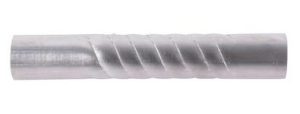Stainless steel, as the name implies, refers to steel that is resistant to weak corrosive media such as air, steam, and water, and chemically corrosive media such as acid, alkali, and salt. It is also called stainless acid-resistant steel. However, in practical applications, some stainless steels accidentally rust .
When brown rust spots (spots) appear on the surface of stainless steel pipes, people are surprised: they think “stainless steel does not rust, so it is not stainless steel when it rusts, and there may be a problem with the steel”.
In fact, this is a one-sided misunderstanding of stainless steel. Stainless steel will also rust under certain conditions. Stainless steel has the ability to resist atmospheric oxidation—that is, rust resistance. It also has the ability to corrode in media containing acids, alkalis and salts. ability – that is, corrosion resistance.
However, its corrosion resistance varies with the chemical composition of its steel, additive state, service conditions and type of environmental media. For example, 304 steel pipe has absolutely excellent corrosion resistance in dry and clean atmosphere. But if you move to a coastal area, it will quickly rust in the sea fog with a lot of salt, and 316 steel pipe performs well.
Therefore, not any kind of stainless steel can resist corrosion and rust in any environment. Stainless steel is a fine, extremely thin, strong and stable chromium-rich oxide film formed on its surface. It prevents the continuous penetration and oxidation of oxygen atoms, thereby obtaining corrosion resistance. Once this film is continuously destroyed for some reason, oxygen atoms in the air or liquid will continue to infiltrate or iron atoms in the metal will continue to precipitate, forming loose iron oxide, and the metal surface will continue to rust.
There are three main factors that affect the corrosion of stainless steel pipes:
1. Alloy element content.
Generally speaking, steel containing 10.5% chromium is not easy to rust, and the higher the chromium content, the better the corrosion resistance. For example, 304 material requires 8-10% nickel and 18-20% chromium, which generally does not rust.
2. The smelting process of the enterprise will also affect the corrosion resistance of stainless steel.
A large-scale stainless steel plant with good smelting technology, advanced equipment and advanced technology can ensure the control of alloy elements, the removal of impurities and the control of the cooling temperature of the billet, so the product quality is stable and reliable, the internal quality is good, and it is not easy to rust. On the contrary, some small steel The equipment and technology of the factory are backward. In the smelting process, impurities cannot be removed, and the produced products will inevitably rust.
3. External environment, dry and ventilated environment is not easy to rust.
And areas with high air humidity, continuous rainy weather or high pH value of the air are prone to rust, and 304 stainless steel will rust if the surrounding environment is too poor.